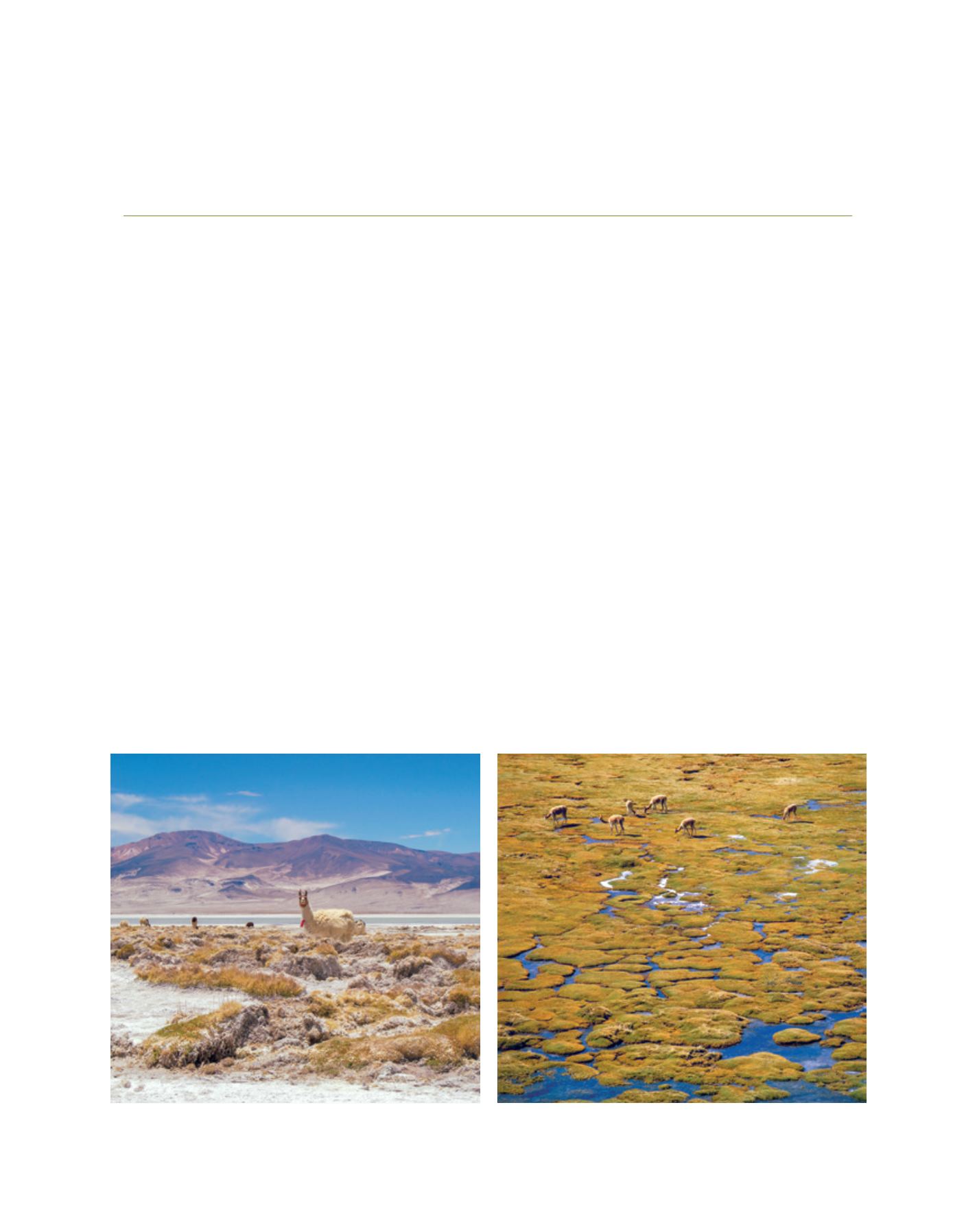

Andean camelids face displacement from some wetlands like these in the arid ecoregion of the Andean High Plateau, due to activities such as
intensive agriculture and mining
[
] 72
Synergies in the fight against desertification for
mitigation and adaptation to climate change
Angelo Sartori, Chief & Wilfredo Alfaro, Forestry Engineer,
M.Sc., Climate Change and Environmental Services Unit,
Forest Development and Support Management Office, National Forestry Commission, Chile
C
hile is severely affected by the impacts of climate
change on desertification, land degradation and
drought. Rainfall has decreased by 20-50 per cent
in the Central Zone during the last century
1
and a reduc-
tion in precipitation in this zone is very likely during the
present century.
2
Chile has an area of 75 million hectares,
with 47.3 million hectares affected by desertification, land
degradation and drought
3
from which 36.9 million hectares
are affected by land degradation.
4
Moreover, Chile has 341
counties in total, with 290 counties affected by desertifica-
tion, land degradation and drought, 26 per cent of them to
a severe degree and 37 per cent to a moderate degree.
Since 2007, the longest drought period on record has affected the
whole country with a water crisis that is without precedent. The
Ministry of Agriculture has declared 268 counties to be in a state
of ‘agriculture emergency due to drought’; 32 counties have been
declared as ‘water shortage areas’ by the Ministry of PublicWorks,
and 20 counties have been declared as affected by ‘catastrophe
of constant drought’ by the Ministry of the Interior. Most of the
Central Zone has been declared as an area under prohibition,
restriction or depleted to new water rights.
5
Land use change in
the country is close to land degradation neutrality (LDN); never-
theless, the area of land with no vegetation cover has expanded
from 24.7 million hectares to 48,587 hectares during the period
2000-2010.
6
The extent of forest cover is 16.7 million hectares;
nonetheless, there is a significant area under forest degradation,
mainly from forest fires and firewood production.
The National Action Programme to Combat Desertification
(PANCCD-Chile) was implemented in 1997. As a result, since
the year 2000 a total area of 4.2 million hectares has come
under sustainable land management plans and a public invest-
ment of US$1,578 million has benefitted an average of 50,000
people per year by supporting Ministry of Agriculture incen-
tives for afforestation, soil reclamation and irrigation.
7
To foster
implementation, priority on synergies led to the integration of
PANCCD-Chile into the National Strategy on Climate Change
and Vegetation Resources (ENCCRV). This national strategy
is led by the National Forestry Commission (CONAF) of the
Ministry of Agriculture of Chile, as the national focal point for
both the United Nations Convention to Combat Desertification
(UNCCD) and the mechanism for Reduction of Emissions
L
iving
L
and
Images: CONAF
















